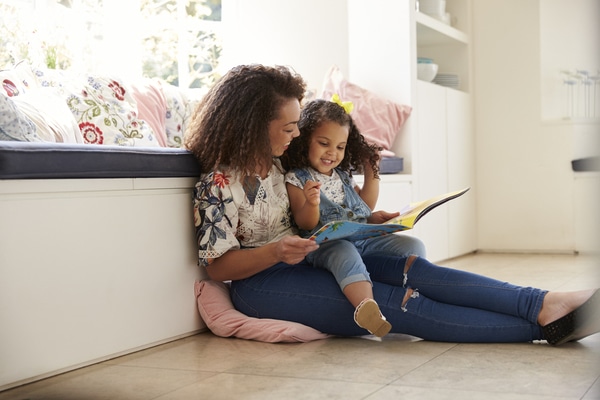Have kids? If so, you may start getting a monthly financial boost soon. On July 15, 2021, the federal government is set to begin sending cash payments to parents as the result of a recent change to the child tax credit.
If you’re interested in getting a firmer financial footing, this extra influx of cash each month can help you do that. Consider using your child tax credit strategically to help meet your future financial goals.
How much can I expect to get?
That depends on the ages of your children, and on your income level. The maximum child tax credit is $3,600 per child under age six and $3,000 per child between the ages of six and 17. The cash payments will total half of your full child tax credit.
For example, if you have one three-year-old child and you qualify for the full amount, you’ll receive $300 per month from July to December 2021, for a total of $1,800. You’ll receive the remaining $1,800 when you file taxes in 2022. (If you have one child between the ages of six and 17, the top monthly amount will be $250, for a total of $1,500 over six months.)
Not every parent will get the full amount. If your adjusted gross income (AGI) is $75,000 or less as an individual, or $150,000 as a married couple filing jointly, you’ll qualify for the full amount. If your AGI is higher, your child tax credit payments will phase out by $50 for every $1,000 of income over the threshold.
If you meet the criteria based on your last tax return, the IRS will automatically enroll you for advance payments of the child tax credit. However, you can choose to opt out if you’d rather take the full credit when you file taxes next year.
How can my child tax credit funds affect my credit score?
The way you use your child tax credit funds is completely up to you; there are no guidelines for how to use the money. Consider these options for using your child tax credit wisely.
- Pay down credit cards. If you’re making minimum payments on one or more credit card accounts, use the extra money from the child tax credit to completely pay off or significantly pay down one card. Consider choosing the card with the highest interest rate to pay off first, as that will save you money in interest over the long term.
By working to actually pay off a card instead of simply remain current on minimum payments, you can lower your credit utilization rate. An important part of your credit score, credit utilization rate is the amount of revolving credit you’re currently using divided by the total amount of revolving credit you have available. Work toward using no more than 10% to 30% of all your available credit.[MB1]
- Build an emergency fund. If you don’t have an emergency savings fund, you’re not alone. (Even before the pandemic, almost a third of Americans had no emergency savings.) But with extra, unexpected money coming in for the child tax credit, you have the perfect opportunity to start (or continue) building an emergency fund. And when you have savings set aside for unexpected expenses, you’ll be less likely to rely on credit cards in a pinch.
Savings can also help you make sure you always pay bills on time, which is an important credit score factor. Payment history accounts for about 35% of your credit score, making late payments one of the biggest factors on your credit score.
- Add new types of credit. If you are thinking of getting a new home or car, your child tax credit money could go towards a down payment. Mortgages and auto loans are different types of credit than credit cards. Having a mix of credit types can have a positive effect on your score.
ScoreSense membership includes personalized Credit Insights, which can make it easy to quickly see the types of changes that might make a difference for your credit history.
Learn more about your credit score and sign up for a free, seven-day trial at ScoreSense.com.




